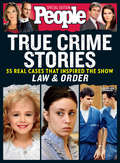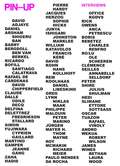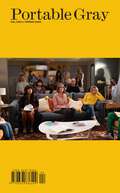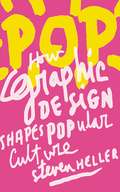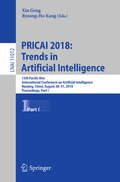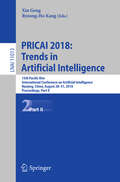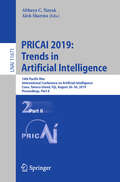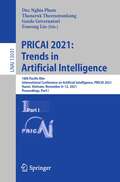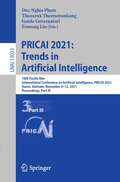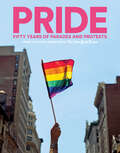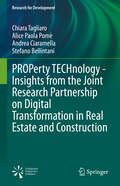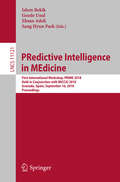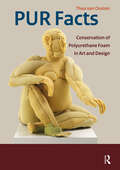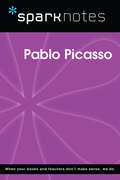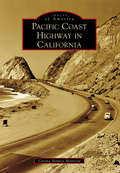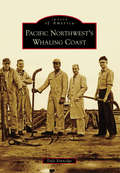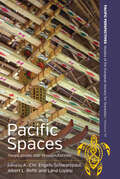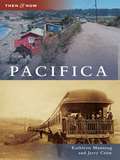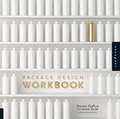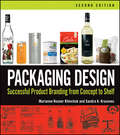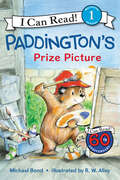- Table View
- List View
PEOPLE True Crime Stories: 35 Real Cases That Inspired the Show Law & Order
by The Editors of PEOPLEInside many of the real life cases to inspire Law & OrderFor over 20 years and across two signature shows-Law & Order and Law & Order: Special Victims Unit-viewers have been riveted by cases that have been "ripped from the headlines." Now, in True Crime Stories, a new special edition from People, go inside 35 real crimes that inspired the hit TV shows. From well-known cases that continue to fascinate us, including JonBenet Ramsey, O.J. Simpson, Robert Durst, and the Mayflower Madam, to the travails of such celebrities and politicians as Hugh Grant, John Edwards, and Anthony Weiner, here are descriptions of the crimes, the key players, and synopses of the episodes the cases inspired, complete with photographs of the real-life players and their respective Law & Order characters. This special edition also includes several "Reality Check" sections that provide insight into the detectives, prosecutors, and sets that have made the shows as realistic as they are. True Crime Stories also includes an interview with renowned Law & Order creator and producer Dick Wolf and photographs of your favorite cast members from both shows. For fans of both Law & Order and for true-crime readers, this is the one special edition you won't be able to do without.Bonus: an exclusive look at Law & Order True Crime: The Menendez Brothers, the exciting new miniseries that focuses on just one shocking story for an entire season.
PIN-UP Interviews
by Andrew Ayers Dylan Fracareta Felix BurrichterThe PIN–UP Interviews is a compilation of over 50 of the most fascinating interviews from PIN-UP magazine since its first issue was published in October 2006. Serious, yet accessible, featuring the elegant and modern aesthetic PIN-UP’s readers have come to expect, there is no comparable source available for such a stunning array of contemporary design talent collected in one place. It is indispensable to all lovers of today’s brightest architectural and design ideas. The PIN–UP Interviews is the first book produced by PIN–UP, the award-winning, New York-based, biannual architecture and design magazine. Cheekily dubbing itself the “Magazine for Architectural Entertainment,” PIN–UP features interviews with architects, designers, and artists, and presents their work informally—as a fun assembly of ideas, stories, and conversations, all paired with cutting-edge photography and artwork. Both raw and glossy, this “cult design zine” (The New York Times) is a nimble mix of genres and themes, finding inspiration in the high and the low by casting a refreshingly playful eye on rare architectural gems, amazing interiors, smart design, and that fascinating area where those spheres connect with contemporary art. Included in The PIN-UP Interviews are the architects David Adjaye, Shigeru Ban, Ricardo Bofill, David Chipperfield, Zaha Hadid, Junya Ishigami, Rem Koolhaas, Peter Marino, Richard Meier, and Ettore Sottsass; artists Daniel Arsham, Cyprien Gaillard, Simon Fujiwara, Oscar Tuazon, Francesco Vezzoli, Boris Rebetez, Retna, Robert Wilson, and Andro Wekua; and designers Rafael de Cárdenas, Martino Gamper, Rick Owens, Hedi Slimane, Bethan Laura Wood, and Clémence Seilles.
POG vol 3 num 1
by The University of Chicago PressThis is volume 3 issue 1 of Portable Gray. Portable Gray (PG), interdisciplinary in scope and dedicated to experimentation, offers a forum for artists and scholars to consider how collaboration can enrich their practices and foster new discoveries. Encouraging contributors to play with artistic and literary forms and modes in order to challenge long-held ideas, PG features essays, interviews, poetry, art, and musical compositions, among other works.
POP: How Graphic Design Shapes Popular Culture
by Steven Heller"Pop culture is often maligned as fleeting, but history shows that sometimes what is pop in one culture has time-honored resonance in later ones. This book is an attempt to show that pop culture, especially as seen through the lenses of design, illustration, satiric and political art (and other things), is integral to a broader understanding of who we are and where we are going."-Steven Heller, from the Introduction. How do popular culture and graphic design influence one another? What are the goals of design? Are they to sell? To package? To entertain? The answers to these questions are complicated and are intimately tied to the effect design has on the overall culture. POP is the first book to analyze the role of graphic design in the broader culture, as well as the impact of design on other art and entertainment forms, from album covers to baseball stadiums. Author Steven Heller addresses such subjects as: --pop icons --viral and guerilla advertising --political satire --the history of Interview, Monocle, Mad, and other magazines --illusionism and three-dimensional design --art for art's sake --design vs. decoration --the return of hand lettering --art for the masses. POP spans over 150 years during which popular culture has influenced mass perception and behavior. Illustrated by more than fifty images, POP is sure to inspire both aspiring and experienced designers.
PRICAI 2018: 15th Pacific Rim International Conference on Artificial Intelligence, Nanjing, China, August 28–31, 2018, Proceedings, Part I (Lecture Notes in Computer Science #11012)
by Xin Geng Byeong-Ho KangThis two-volume set, LNAI 11012 and 11013, constitutes the thoroughly refereed proceedings of the 15th Pacific Rim Conference on Artificial Intelligence, PRICAI 2018, held in Nanjing, China, in August 2018.The 82 full papers and 58 short papers presented in these volumes were carefully reviewed and selected from 382 submissions. PRICAI covers a wide range of topics such as AI theories, technologies and their applications in the areas of social and economic importance for countries in the Pacific Rim.
PRICAI 2018: 15th Pacific Rim International Conference on Artificial Intelligence, Nanjing, China, August 28–31, 2018, Proceedings, Part II (Lecture Notes in Computer Science #11013)
by Xin Geng Byeong-Ho KangThis two-volume set, LNAI 11012 and 11013, constitutes the thoroughly refereed proceedings of the 15th Pacific Rim Conference on Artificial Intelligence, PRICAI 2018, held in Nanjing, China, in August 2018.The 82 full papers and 58 short papers presented in these volumes were carefully reviewed and selected from 382 submissions. PRICAI covers a wide range of topics such as AI theories, technologies and their applications in the areas of social and economic importance for countries in the Pacific Rim.
PRICAI 2019: 16th Pacific Rim International Conference on Artificial Intelligence, Cuvu, Yanuca Island, Fiji, August 26-30, 2019, Proceedings, Part III (Lecture Notes in Computer Science #11672)
by Abhaya C. Nayak Alok SharmaThis three-volume set LNAI 11670, LNAI 11671, and LNAI 11672 constitutes the thoroughly refereed proceedings of the 16th Pacific Rim Conference on Artificial Intelligence, PRICAI 2019, held in Cuvu, Yanuca Island, Fiji, in August 2019.The 111 full papers and 13 short papers presented in these volumes were carefully reviewed and selected from 265 submissions. PRICAI covers a wide range of topics such as AI theories, technologies and their applications in the areas of social and economic importance for countries in the Pacific Rim.
PRICAI 2019: 16th Pacific Rim International Conference on Artificial Intelligence, Cuvu, Yanuca Island, Fiji, August 26–30, 2019, Proceedings, Part II (Lecture Notes in Computer Science #11671)
by Abhaya C. Nayak Alok SharmaThis three-volume set, LNAI 11670, LNAI 11671, and LNAI 11672 constitutes the thoroughly refereed proceedings of the 16th Pacific Rim Conference on Artificial Intelligence, PRICAI 2019, held in Cuvu, Yanuca Island, Fiji, in August 2019.The 111 full papers and 13 short papers presented in these volumes were carefully reviewed and selected from 265 submissions. PRICAI covers a wide range of topics such as AI theories, technologies and their applications in the areas of social and economic importance for countries in the Pacific Rim.
PRICAI 2021: 18th Pacific Rim International Conference on Artificial Intelligence, PRICAI 2021, Hanoi, Vietnam, November 8–12, 2021, Proceedings, Part I (Lecture Notes in Computer Science #13031)
by Fenrong Liu Guido Governatori Thanaruk Theeramunkong Duc Nghia PhamThis three-volume set, LNAI 13031, LNAI 13032, and LNAI 13033 constitutes the thoroughly refereed proceedings of the 18th Pacific Rim Conference on Artificial Intelligence, PRICAI 2021, held in Hanoi, Vietnam, in November 2021.The 93 full papers and 28 short papers presented in these volumes were carefully reviewed and selected from 382 submissions. PRICAI covers a wide range of topics in the areas of social and economic importance for countries in the Pacific Rim: artificial intelligence, machine learning, natural language processing, knowledge representation and reasoning, planning and scheduling, computer vision, distributed artificial intelligence, search methodologies, etc. Part I includes the following topical headings: AI Foundations / Decision Theory, Applications of AI, Data Mining and Knowledge Discovery, Evolutionary Computation / Optimisation, Knowledge Representation and Reasoning.
PRICAI 2021: 18th Pacific Rim International Conference on Artificial Intelligence, PRICAI 2021, Hanoi, Vietnam, November 8–12, 2021, Proceedings, Part III (Lecture Notes in Computer Science #13033)
by Fenrong Liu Guido Governatori Thanaruk Theeramunkong Duc Nghia PhamThis three-volume set, LNAI 13031, LNAI 13032, and LNAI 13033 constitutes the thoroughly refereed proceedings of the 18th Pacific Rim Conference on Artificial Intelligence, PRICAI 2021, held in Hanoi, Vietnam, in November 2021.The 93 full papers and 28 short papers presented in these volumes were carefully reviewed and selected from 382 submissions. PRICAI covers a wide range of topics in the areas of social and economic importance for countries in the Pacific Rim: artificial intelligence, machine learning, natural language processing, knowledge representation and reasoning, planning and scheduling, computer vision, distributed artificial intelligence, search methodologies, etc. Part III includes two thematic blocks: Reinforcement Learning, followed by Vision and Perception.
PRIDE: Fifty Years of Parades and Protests from the Photo Archives of the New York Times
by Adam Nagourney The New York TimesA stunning fifty-year visual history of LGBTQ pride marches, parades, and protests, taken from the New York Times photo archives.It began in New York City on June 28, 1969. When police raided the Stonewall Inn—a bar in the Greenwich Village neighborhood, known as a safe haven for gay men—violent demonstrations and protests broke out in response. The Stonewall Riots, as they would come to be known, were the first spark in the wildfire that would become the LGBTQ rights revolution. Fifty years later, the LGBTQ community and its supporters continue to gather every June to commemorate this historic event. Here, collected for the first time by The New York Times, is a powerful visual history of five decades of parades and protests of the LGBTQ rights movement. These photos, paired with descriptions of major events from each decade as well as selected reporting from The Times, showcase the victories, setbacks, and ongoing struggles for the LGBTQ community.“To take in the breadth of [PRIDE’s] contents—to see the scope of LGBTQ+ rights, from the first Christopher Street Day march in 1970 to protests for transgender rights just last year—is to witness the power of visibility firsthand.” —them.“This book is a powerful visual history of five decades of parades and protests for equality. Educational and visually enriching, complete with photos from The New York Times, this book is the perfect companion for any coffee table.” —BookTrib
PROPerty TECHnology - Insights from the Joint Research Partnership on Digital Transformation in Real Estate and Construction (Research for Development)
by Andrea Ciaramella Chiara Tagliaro Alice Paola Pomè Stefano BellintaniThe book presents insights from over five years of research by the Real Estate Center at the Department of Architecture, Built environment and Construction engineering (ABC) of Politecnico di Milano, within the Italian PropTech Network initiative. It explores how digital technology is addressing key challenges in the built environment, such as climate change, urbanization, rising costs, and demographic shifts. Traditionally slow to adapt, the real estate sector must embrace innovation to meet urgent Sustainable Development Goals. Focusing on digitalization, the book analyzes tools and technologies that can transform property management, enhance market processes, and add value for stakeholders. It provides a broad literature review, defines PropTech, and examines its role in reshaping the construction and real estate industry. Case studies illustrate the sector&’s ongoing transformation while critically evaluating different PropTech applications. The book contributes to academic debate and supports real estate professionals navigating digital transformation by systematizing current knowledge. It also highlights potential risks, emphasizing the need for further research to ensure sustainable and informed innovation.
PRedictive Intelligence in MEdicine: First International Workshop, PRIME 2018, Held in Conjunction with MICCAI 2018, Granada, Spain, September 16, 2018, Proceedings (Lecture Notes in Computer Science #11121)
by Gozde Unal Ehsan Adeli Islem Rekik Sang Hyun ParkThis book constitutes the refereed proceedings of the First International Workshop on PRedictive Intelligence in MEdicine, PRIME 2018, held in conjunction with MICCAI 2018, in Granada, Spain, in September 2018. The 20 full papers presented were carefully reviewed and selected from 23 submissions. The main aim of the workshop is to propel the advent of predictive models in a broad sense, with application to medical data. Particularly, the workshop will admit papers describing new cutting-edge predictive models and methods that solve challenging problems in the medical field.
PUR Facts: Conservation of Polyurethane Foam in Art and Design (RCE Publications)
by Thea OostenFlexible Polyurethane (PUR) foams, in use since the 1950s and familiar from furniture upholstery and other domestic textiles, can be found in museum collections in numerous art and design objects. However, these exhibits pose severe conservation problems due to the ageing of the foam caused by photo-oxidation, leading to discoloration, loss of strength and fl exibility, and fi nally the crumbling of the object. This defi nitive work outlines the most up-to-date methods of restoring fl exibility of older foams and protecting new foams from degradation by coating them with stabilising systems acting effectively as a ‘sunblock’. The author, an experienced conservator, describes the research involved in developing the new methods and their impact on the visual, textural and chemical properties of treated PUR foams. One of the chapters details the preparation and application of the light stabilizing system to PUR foams.
Pa' habernos matao
by Antonio ResinesUn hermoso y entretenido recorrido por la vida de Antonio Resines, por sus películas y por la historia reciente de España. Antonio Resines, después de haber aprobado el Curso Preuniversitario que a finales de los setenta era conocido vulgarmente como «Preu», empezó en Madrid sus estudios universitarios, primero en Derecho y luego en Periodismo. Fue en esta época cuando, por casualidad, comenzó a actuar. Nada presagiaba entonces que llegaría a ser uno de los actores más reconocidos de su generación, a obtener distinciones tan importantes como el Goya al mejor actor y a convertirse en presidente de la Academia de las Artes y las Ciencias Cinematográficas de España. En Pa' habernos matao el famoso actor rememora su vida y sus películas, al tiempo que hace un ameno y entrañable recorrido por la historia reciente de nuestro país. Un libro lleno de anécdotas -algunas divertidas, otras cáusticas y otras muy reveladoras- por cuyas páginas desfilan un nutrido elenco de personajes -Fernando Trueba, José Luis Cuerda, Jorge Sanz, Fernando Colomo, entre otros- y momentos clave de las últimas décadas. Descubriremos también a un hombre bueno, con un gran sentido del humor y que disfruta de la compañía de sus amigos. La crítica ha dicho...«Una verdadera delicia, sin excepciones.»El correo Gallego «Pa' habernos matao es un libro precioso. Las memorias de un actor único, Antonio Resines.»El correo Gallego
Pablo Picasso (SparkNotes Biography Guide)
by SparkNotesPablo Picasso (SparkNotes Biography Guide) Making the reading experience fun! SparkNotes Biography Guides examine the lives of historical luminaries, from Alexander the Great to Virginia Woolf. Each biography guide includes:An examination of the historical context in which the person lived A summary of the person&’s life and achievements A glossary of important terms, people, and events An in-depth look at the key epochs in the person&’s career Study questions and essay topics A review test Suggestions for further reading Whether you&’re a student of history or just a student cramming for a history exam, SparkNotes Biography guides are a reliable, thorough, and readable resource.
Pacific Coast Highway in California (Images of America)
by Carina Monica MontoyaMore commonly known as Pacific Coast Highway, State Route 1 ribbons along or near the Pacific Ocean from Northern California at Leggett in Mendocino down to Southern California at San Juan Capistrano in Orange County. Its construction began in 1913 and was done incrementally, largely because of funding issues, shortage of labor, legal challenges, deep canyons, steep mountains, solid rock, and unstable earth. A true modern marvel, its unique and extraordinary construction allows easy access to some of the country's most famous and historical places and picturesque sights. Thousands of pounds of dynamite were used to blast through granite, marble, and sandstone to build a highway following near or along the coastline. Among the 33 bridges along the route is the remarkable Bixby (Rainbow) Bridge at Big Sur. The highway wends its way through some of the most magnificent and scenic landscapes and historical places found between Ventura and Humboldt Counties, making it more than just a road. It is a destination.
Pacific Northwest Line Drawing: How to Draw Flowers, Trees, Mushrooms, Birds, Animals, Landmarks, and More
by Peggy DeanThis book of simple step-by-step line drawings from beloved art teacher Peggy Dean of The Pigeon Letters will deepen your appreciation for the wonders of the Pacific Northwest.Learn to draw 150 Pacific Northwest natural wonders (plus iconic landmarks) in just a few simple steps each! Rooted in love for the PNW, this no-skills-necessary how-to-draw book will encourage users to stop and notice the beauty that surrounds them. Here you&’ll learn the basics of line drawing as well as facts about the ecology, plants, wildlife, and landmarks of this amazing region. Inside you'll find:Native plants like salmonberries, sword ferns, and Pacific rhododendronMajestic trees like the Western red cedar and Douglas firMysterious mushrooms like the chanterelle and morelIconic animals like otters and orcasBucket-list birds like the Northern spotted owl and tufted puffinPopular landmarks like the Space Needle, Mount Rainier, and Crater LakeLine drawing is a meditative, easy-to-master art form featuring illustrative, doodle-like designs. Peggy, who has deep roots in the Pacific Northwest, teaches you how to start with the simplest doodles, building into more elaborate, delicate illustrations. These simple line drawings will allow you to branch out and have fun with your own personal style, as well as inspire you to add flourishes to other projects. Drawings are ordered from simple to advanced, and by category (flora, fauna, landmarks).If you enjoyed Ed Emberley as a child, you&’ll love this book of simple step-by-step line drawings with space to practice!
Pacific Northwest's Whaling Coast
by Dale VinnedgePacific Northwest waters from Alaska to Oregon lie between the Arctic whaling grounds and the home whaling ports of San Francisco and Honolulu. While the Pacific Northwest was not a whaling destination, whales in these rich grounds were pursued for many years as whale ships moved between the whalers' summer whaling grounds and southern home ports. After 1900, whaling in the north Pacific changed from sailing ships to modern, steam-powered iron ships and harpoon cannons. Land stations were built along southern Alaska, Vancouver Island in British Columbia, and Washington State. The new "killer" ships brought whales to these land stations for flensing and for rendering into oil, fertilizer, and other products. Most of these products were shipped to Seattle and San Francisco on steamers and factory ships at the end of the season. At the start of the season, supplies and workers were shipped up from Seattle to resupply and repopulate the stations.
Pacific Spaces: Translations and Transmutations (Pacific Perspectives: Studies of the European Society for Oceanists #10)
by Albert L. Refiti A.-Chr. Engels-Schwarzpaul, Lana LopesiDelving into Pacific spaces from a variety of disciplinary perspectives and interpretations, this book looks at how the anthropological and architectural can be connected. The contributors to this book – architectural practitioners, architectural and spatial design theorists, anthropologists and historians – show not only how new theoretical perspectives can arise out of comparing aspects specific to one discipline with their equivalents of another, but also demonstrate how a space of emergence is created for something that goes beyond both, enhancing both fields of potentialities.
Pacifica
by Kathleen Manning Jerry CrowPacifica and its coast, once envisioned as a string of resorts, casinos, and vacation cottages in place of artichoke fields, was overlooked after the failure of the Ocean Shore Railroad in 1920. Demand for reasonably priced housing revived the boom, and Pacifica was incorporated in 1957.
Package Design Workbook: The Art And Science Of Successful Packaging
by Steven Dupuis John SilvaThe Art and Science of Successful Packaging provides designers with a thoughtful packaging primer that covers the challenges of designing packaging for a competitive market in a very hardworking and relevant way. Package Design Workbook addresses all aspects of the creative process including choosing a package format, colors and materials, final finishes, and special considerations such as awkward objects and unique display considerations. This book breaks down the process of design in a much more comprehensive way than most books on the subject, which just analyze the final designs. This guide also offers case studies in the back half of the book with the text focusing on why specific colors, formats, type treatments, and finishes were chosen, and what the resulting effects were on the consumer and the client.
Packaging Design
by Marianne R. Klimchuk Sandra A. KrasovecThe fully updated single-source guide to creating successful packaging designs for consumer productsNow in full-color throughout, Packaging Design, Second Edition has been fully updated to secure its place as the most comprehensive resource of professional information for creating packaging designs that serve as the marketing vehicles for consumer products. Packed with practical guidance, step-by-step descriptions of the creative process, and all-important insights into the varying perspectives of the stakeholders, the design phases, and the production process, this book illuminates the business of packaging design like no other.Whether you're a designer, brand manager, or packaging manufacturer, the highly visual coverage in Packaging Design will be useful to you, as well as everyone else involved in the process of marketing consumer products. To address the most current packaging design objectives, this new edition offers:Fully updated coverage (35 percent new or updated) of the entire packaging design process, including the business of packaging design, terminology, design principles, the creative process, and pre-production and production issuesA new chapter that puts packaging design in the context of brand and business strategiesA new chapter on social responsibility and sustainabilityAll new case studies and examples that illustrate every phase of the packaging design processA history of packaging design covered in brief to provide a context and framework for today's businessUseful appendices on portfolio preparation for the student and the professional, along with general legal and regulatory issues and professional practice guidelines
Packaging Sustainability
by Wendy JedlickaHow to take the lead with sustainable packaging design solutions With initiatives like the Wal-Mart Scorecard in the U.S. and the E.U.'s Packaging Directive, delivering sustainable packaging is now an integral part of today's global competitive market. Written by experts from a wide variety of fields, here is a comprehensive, single source of actionable information that enables everyone involved in the design and development process to make smart, informed decisions, opening new possibilities for creating truly innovative solutions. Wendy Jedlicka, CPP (Roseville, MN) is President of Jedlicka Design Ltd. and a member of the faculty at Minneapolis College of Art and Design's groundbreaking Sustainable Design Certificate Program. A Certified Packaging Professional, she serves as Upper Midwest Chapter Chair (o2umw.org), as well as U.S. co-coordinator for the o2 Global Green Design Network (o2.org), and contributes frequently to Packaging Design magazine's "Sustainability Update" feature column.
Paddington's Prize Picture (I Can Read Level 1)
by Michael BondPaddington Bear has charmed readers of all ages for almost 60 years! Now part of the I Can Read line, Michael Bond’s classic character will delight beginning readers with his curious nature and nose for adventure. Paddington discovers a love of painting when Mr. Gruber shows him just how fun it can be. But he’s not the only one—Mr. Brown has an artistic streak, too. So when a painting contest comes to town, the winning picture is a surprise to all. Because when Paddington is involved, the ordinary turns extraordinary! Paddington’s Prize Picture is a Level One I Can Read book, which means it’s perfect for children learning to sound out words and sentences.
